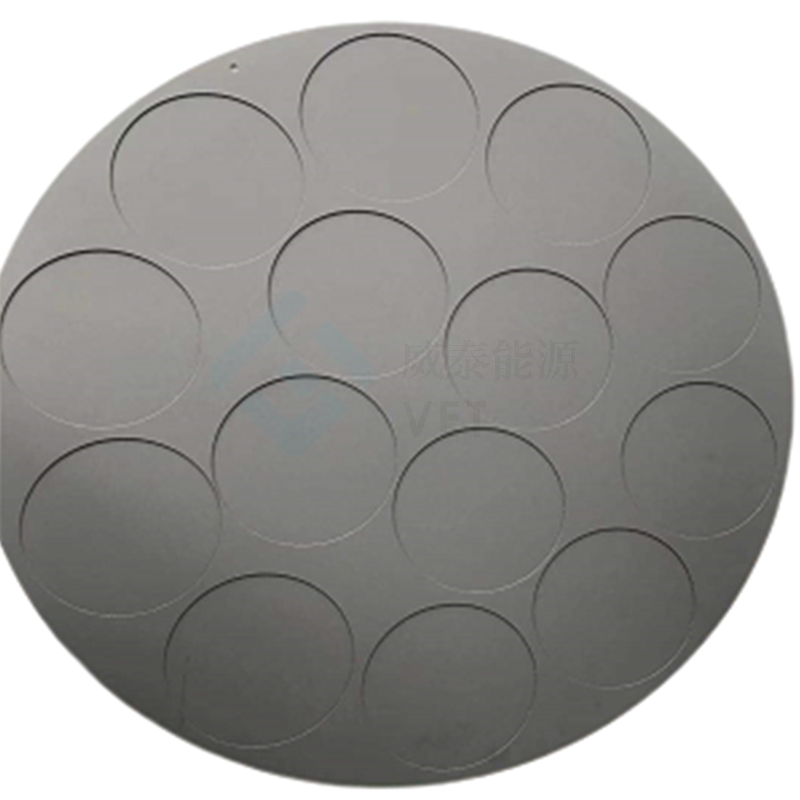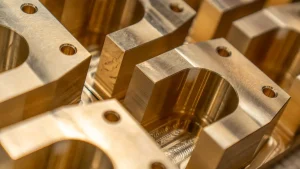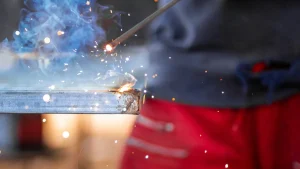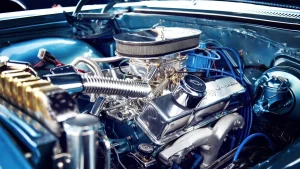Surface treatment methods like CVD coating, nitriding treatment, and HVOF coating enhance material performance in unique ways. Each method offers distinct advantages based on durability, corrosion resistance, and application needs. The CVD coating process, for instance, creates thin, uniform layers ideal for precision tools. Choosing the right method ensures optimal performance and cost-effectiveness.

Key Takeaways
- CVD coating adds a thin, even layer. It makes tools harder and more durable, great for tough conditions.
- Nitriding makes surfaces harder and stronger without cooling quickly. It works well for car and airplane parts like gears and shafts.
- HVOF coating forms thick, strong layers for rough environments. It is ideal for mining, oil, gas, and energy equipment.
CVD Coating
What is CVD Coating?
CVD coating, or Chemical Vapor Deposition coating, is a process used to enhance the surface properties of materials. It involves depositing a thin, uniform layer of material onto a substrate. This method improves hardness, wear resistance, and chemical stability. Industries such as aerospace, automotive, and electronics rely on this technique to extend the lifespan of components.
How It Works
The CVD coating process occurs in a controlled environment. A substrate is placed inside a reaction chamber. Gaseous precursors are introduced, which react chemically at high temperatures. These reactions form a solid material that adheres to the substrate’s surface. The result is a durable and precise coating with excellent adhesion.
Benefits
CVD coating offers several advantages. It creates highly uniform layers, even on complex geometries. The coatings exhibit exceptional hardness and resistance to wear and corrosion. Additionally, the process allows for the deposition of a wide range of materials, including metals, ceramics, and carbides.
Limitations
Despite its benefits, CVD coating has some drawbacks. The process requires high temperatures, which may not suit all substrates. It can also be time-consuming and expensive. Furthermore, the equipment needed for CVD coating is complex and requires skilled operators.
Ideal Applications
CVD coating is ideal for applications requiring precision and durability. Cutting tools, turbine blades, and semiconductor components benefit from its properties. It is also widely used in industries where resistance to extreme conditions is critical.
Nitriding Treatment
What is Nitriding Treatment?
Nitriding treatment is a surface hardening process that diffuses nitrogen into the surface of a metal. This technique enhances the hardness, wear resistance, and fatigue strength of components. It is commonly used on steel and other ferrous alloys. Industries such as automotive, aerospace, and manufacturing rely on nitriding to improve the performance of gears, crankshafts, and other high-stress parts.
How It Works
The nitriding process involves heating the metal in a controlled environment containing nitrogen-rich gases, such as ammonia. At elevated temperatures, nitrogen atoms penetrate the surface and form hard nitrides with the metal. Unlike other heat treatments, nitriding does not require quenching, which reduces the risk of distortion. The process can be performed using gas, plasma, or salt bath methods, depending on the application.
Advantages
Nitriding offers several benefits:
- It creates a hard, wear-resistant surface while maintaining a tough core.
- The process operates at relatively low temperatures, minimizing distortion.
- It improves fatigue resistance and corrosion protection.
- The absence of quenching makes it suitable for precision components.
Disadvantages
Despite its advantages, nitriding has limitations:
- It works best on specific alloys containing nitride-forming elements like chromium or aluminum.
- The process can take several hours, making it time-intensive.
- The hardened layer is relatively thin compared to other treatments.
Best Use Cases
Nitriding is ideal for components subjected to high wear and fatigue. Examples include engine parts, gears, and dies. It is also suitable for applications requiring minimal distortion and enhanced surface properties.
HVOF Coating
What is HVOF Coating?
HVOF coating, or High-Velocity Oxy-Fuel coating, is a thermal spray process that enhances the surface properties of materials. It involves spraying molten or semi-molten particles onto a substrate at high speeds. This method creates dense, durable coatings with excellent adhesion. Industries such as aerospace, energy, and manufacturing use HVOF to protect components from wear, corrosion, and high temperatures.
How It Works
The HVOF process uses a combustion chamber where fuel and oxygen mix and ignite. This reaction generates a high-temperature, high-pressure gas stream. Powdered coating material is injected into this stream, where it melts or softens. The particles accelerate to supersonic speeds and impact the substrate, forming a tightly bonded coating. The process allows precise control over coating thickness and properties.
Strengths
HVOF coating offers several advantages:
- It produces dense coatings with low porosity, enhancing durability.
- The process improves wear and corrosion resistance.
- It operates at relatively low temperatures, reducing thermal damage to the substrate.
- The coatings can withstand extreme environments, including high temperatures and aggressive chemicals.
Weaknesses
Despite its benefits, HVOF has limitations:
- The equipment is expensive and requires skilled operators.
- The process may not suit components with intricate geometries.
- It can be time-intensive for large-scale applications.
Typical Applications
HVOF coating is ideal for components exposed to harsh conditions. Examples include turbine blades, pump impellers, and hydraulic cylinders. It is also widely used in industries requiring high wear resistance, such as mining and oil and gas.
Tip: HVOF coating works best for applications where durability and corrosion resistance are critical.
Comparative Analysis
Durability and Wear Resistance
Durability and wear resistance vary significantly among these methods. CVD coating creates a hard, uniform layer that resists wear effectively, even under high-stress conditions. Nitriding treatment enhances surface hardness while preserving the core’s toughness, making it ideal for components subjected to fatigue. HVOF coating produces dense, low-porosity layers that excel in abrasive and erosive environments. Each method offers unique strengths, but the choice depends on the specific wear challenges of the application.
Cost and Affordability
Cost considerations often influence the selection of surface treatments. Nitriding treatment is generally more affordable due to its lower equipment and operational costs. CVD coating, while effective, involves high-temperature processes and complex machinery, making it more expensive. HVOF coating falls between the two, with moderate costs but higher efficiency for large-scale applications. Evaluating the budget alongside performance needs helps determine the most cost-effective option.
Temperature and Corrosion Resistance
CVD coating provides excellent resistance to high temperatures and chemical corrosion, making it suitable for extreme environments. Nitriding treatment enhances corrosion resistance but performs best in moderate conditions. HVOF coating withstands both high temperatures and aggressive chemicals, offering a balance of thermal and corrosion protection. Industries requiring exposure to harsh environments often favor CVD or HVOF coatings.
Application Suitability
Each method suits specific applications. CVD coating works well for precision tools and semiconductor components. Nitriding treatment is ideal for automotive and aerospace parts like gears and crankshafts. HVOF coating protects components in mining, oil and gas, and energy sectors. Understanding the operational demands of the application ensures the right choice.
Environmental and Safety Considerations
Environmental and safety factors also play a role. CVD coating involves high temperatures and chemical precursors, requiring strict safety protocols. Nitriding treatment operates at lower temperatures and avoids quenching, reducing risks. HVOF coating uses combustion processes, which may produce emissions but minimizes substrate damage. Selecting a method with lower environmental impact aligns with sustainable practices.
Choosing the Right Method
Key Factors to Consider
Selecting the right surface treatment method depends on several critical factors:
- Material Compatibility: Each method works best with specific materials. For example, nitriding suits ferrous alloys, while CVD and HVOF coatings can be applied to a broader range of substrates.
- Performance Requirements: Consider the desired properties, such as wear resistance, corrosion protection, or thermal stability. CVD coatings excel in precision and chemical resistance, while HVOF coatings offer durability in harsh environments.
- Budget Constraints: Evaluate the cost of equipment, materials, and processing time. Nitriding is often the most economical, while CVD coating tends to be more expensive.
- Component Geometry: Complex shapes may limit the effectiveness of certain methods. CVD coating handles intricate geometries well, whereas HVOF may struggle with uniform coverage.
Industry-Specific Recommendations
Different industries benefit from specific surface treatments:
- Aerospace: CVD coatings protect turbine blades and engine components from extreme heat and wear.
- Automotive: Nitriding enhances the durability of gears, crankshafts, and other high-stress parts.
- Oil and Gas: HVOF coatings shield equipment like pump impellers and valves from corrosion and abrasion.
- Electronics: CVD coatings provide precision and chemical stability for semiconductor components.
For more product details, please contact steven@china-vet.com Or website: www.vet-china.com.






